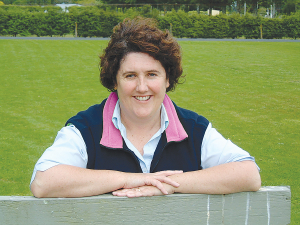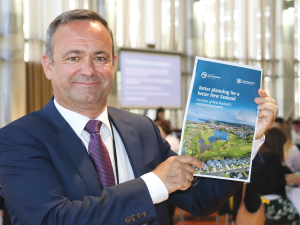Conditions are looking better than forecast for the country’s dairy farmers.
That’s the view of DairyNZ’s head of farm performance, Sarah Speight, who says with things looking better, the onus is now on farmers to make the most out of the few months while the cows are milking happily.
She agrees with other commentators who are saying that the dairy industry has pulled out of the slump that has affected sheep and beef and that the price correction for dairy farmers has been short and sharp.
Speight says farmers had been anxious about the money they were likely to be paid for their milk, but the improvement in the Global Dairy Trade auctions has taken away some of their concerns, along with a drop in farm inflation. But she adds that people are still concerned about cost pressures.
“Farmers are a lot happier and a lot less concerned than they were before Christmas,” she says.
In terms of on-farm conditions around the country, Sarah Speight says in some places it is starting to get a bit dry. She says there are patches of dry in the Waikato and the pumice country in the Bay of Plenty.
Taranaki is dry, but not drier than normal. Horowhenua is also dry and recent rain will help the situation. Not unexpectedly the Wairarapa is also dry, but this is not a major dairying region and is not something to panic about.
“South Otago is probably a little bit drier than normal for this time of the year, while Canterbury is quite dry, but irrigation seems to be helping – apart from the areas where there are water-take restrictions. But such restrictions on some of the smaller schemes are normal for this time of the year,” she says.
There is some good news around milk production, says Speight. Anecdotally, she says it looks like the Bay of Plenty and Waikato are about 5% above normal, and across the country the figure seems to be about 2-3% above normal. She says people have been taking extra cuts of silage, partly due to farmers concerned about a potentially dry period.
Speight says summer crops are coming on and these must be used now, which means that there is going to be a good build-up of supplements on farm, should they be needed.
“The problem is that no one really knows what the weather is going to do in the coming months. What we are seeing now is quite different to what NIWA was predicting, which was it was going to be a ‘mother of all summer droughts’,” she says.
Speight says there is concern that the drought may come later and go into autumn and winter, but some people are saying the drought has already peaked.
Things To Be Aware Of
Given the present warm, moist conditions, DairyNZ is warning dairy farmers to be on the lookout for signs of facial eczema. Sarah Speight describes the situation as a perfect storm, the main thing being that night-time temperatures over 20 degrees push up the risk of eczema.
“Facial eczema is notoriously variable across areas, so it’s important that people get in touch with their vets or do their own testing,” she says.
Speight says there are also reports of grass staggers, particularly in young calves, which again is not unusual for the time of the year. She says young stock tend to get knocked around at this time of year, so DairyNZ encourages people to check the weights of these. At six months they should be at 30% of their live mature weight, 60% at fifteen months, and 90% the first year they calve.
The other issue that dairy farmers need to be on to, says Speight, is making sure they have any culled cows booked in with the meat processors early.
She says with lots of grass around, many livestock farmers are holding on to stock – especially sheep farmers who are trying to get extra weight on their stock to help make up for poor prices. But she says there is a potential problem if everyone wants their stock killed at the same time.
“We are urging dairy farmers to be proactive in this regard and book space as soon as possible so as not to be caught with extra animals if feed supplies on farm suddenly start to disappear,” she says.
Speight it’s a busy time for the industry and DairyNZ is running discussion groups on a range of subjects, including cash flow budgeting, contract milking workshops and effluent management.
Speight says their website has lots of information available to farmers on these and many more subjects.


















